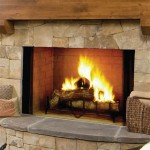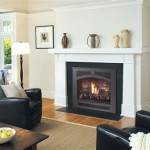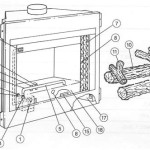Wood Burning Fireplace Gas Starter Kits: A Comprehensive Guide
Wood burning fireplaces offer a timeless appeal, providing warmth and ambiance to homes for centuries. However, starting a wood fire can sometimes be a challenge, requiring patience and skill. A wood burning fireplace gas starter kit offers a convenient solution, streamlining the ignition process and reducing reliance on kindling and paper.
These kits essentially integrate a gas burner into the fireplace, allowing for a quick and controlled flame to ignite the wood. Once the wood is burning steadily, the gas is turned off, and the fire continues to burn naturally. This system minimizes the time and effort required to establish a strong, sustainable fire. This article will explore the components, benefits, installation considerations, and maintenance aspects of wood burning fireplace gas starter kits.
Components of a Gas Starter Kit
A typical wood burning fireplace gas starter kit comprises several essential components that work in concert to deliver a safe and efficient ignition system. Understanding each part allows for informed decision-making during purchase and installation.
The primary component is the burner itself, usually constructed from durable materials such as stainless steel or brass to withstand high temperatures and prolonged use. Burner designs vary, but they generally consist of a perforated pipe or tube that distributes the gas evenly across the fireplace floor. The size and configuration of the burner are crucial, as they determine the flame pattern and the area it effectively ignites.
The gas valve controls the flow of gas to the burner. This valve can be a manual on/off valve, requiring the user to physically turn a handle to start and stop the gas flow. Alternatively, some kits incorporate a timer valve, which automatically shuts off the gas supply after a pre-determined period, enhancing safety and preventing accidental gas leaks. The valve is typically connected to the gas supply line using appropriate fittings and connectors.
Another integral element is the gas supply line. This flexible or rigid pipe connects the gas valve to the home's gas supply (natural gas or propane). The material and size of the gas line must comply with local building codes and be rated for the specific type and pressure of gas used. Safety is paramount when working with gas lines, and proper installation by a qualified professional is strongly recommended.
Finally, the ignition source is what initiates the flame at the burner. Commonly, this is a manual lighter or a spark igniter, either handheld or built-in. Some advanced kits may incorporate electronic ignition systems, offering push-button convenience and improved reliability. The ignition system ensures a safe and controlled start to the gas flame, allowing the user to quickly ignite the wood.
Benefits of Using a Gas Starter Kit
The advantages of incorporating a gas starter kit into a wood burning fireplace are numerous, improving efficiency, convenience, and safety.
One of the most significant benefits is the ease of ignition. Starting a traditional wood fire can be time-consuming, often requiring multiple attempts and adjustments to achieve a sustainable flame. A gas starter eliminates this frustration, providing a consistent and reliable flame that quickly ignites the woodpile. This is particularly beneficial during cold weather or when time is limited.
Reduced use of kindling and paper is another compelling advantage. Traditional fire starting methods often rely on substantial amounts of kindling and paper to build a base flame. These materials can be messy, create excessive smoke, and contribute to creosote buildup in the chimney. A gas starter minimizes or eliminates the need for kindling and paper, resulting in a cleaner and more efficient fire.
Improved safety is a key consideration. By providing a controlled and predictable flame, gas starters reduce the risk of uncontrolled fires. Timer valves, in particular, offer an added layer of safety, automatically shutting off the gas supply if left unattended. This feature helps prevent gas leaks and reduces the potential for carbon monoxide buildup. Always ensure proper ventilation when operating a wood burning fireplace, regardless of whether a gas starter is used. Regular chimney inspections and cleaning are also essential.
Enhanced convenience is a final, significant benefit. With a gas starter, starting a fire becomes a simple and quick process, making it easier to enjoy the warmth and ambiance of a wood burning fireplace. This convenience is particularly appealing to individuals with mobility issues or those who prefer a more straightforward fire-starting method.
Installation and Maintenance Considerations
Proper installation and regular maintenance are crucial to ensure the safe and efficient operation of a wood burning fireplace gas starter kit. While some homeowners may be tempted to undertake the installation themselves, it is strongly recommended to hire a qualified gas technician.
Installation involves connecting the gas starter to the home's gas supply. This process requires specialized tools and expertise to ensure a leak-proof and code-compliant connection. Incorrect installation can lead to gas leaks, which can be hazardous. A professional will also ensure that the gas line is properly sized and routed to prevent pressure drops and ensure optimal burner performance.
Compliance with local building codes is paramount. Gas fireplace installations are subject to strict regulations designed to protect homeowners and prevent accidents. A qualified technician will be familiar with these codes and ensure that the installation meets all requirements. This includes proper venting, clearances from combustible materials, and gas line specifications.
Regular maintenance is also essential for long-term performance and safety. Periodically inspect the burner for clogs or damage. Clean the burner ports with a wire brush to remove any debris that may obstruct the gas flow. Check the gas valve and connections for leaks using a soapy water solution. If any leaks are detected, immediately shut off the gas supply and contact a qualified technician.
Additionally, professional inspections are recommended annually. A qualified technician can thoroughly inspect the entire gas starter system, including the gas line, valve, burner, and ignition system. They can also assess the overall condition of the fireplace and chimney to ensure safe and efficient operation. Regular maintenance and inspections will help prolong the life of the gas starter and prevent costly repairs in the future. Furthermore, a properly maintained system ensures optimal performance and safety, allowing homeowners to enjoy their wood burning fireplace with peace of mind.

Gas Fireplace Starters Log Lighter Universal

How To Install A Log Lighter Fireplace Gas Starter Pipe

Want To Convert Gas Wood Fireplace Full Service Chimney

Greenstart Igniter Made In America Fireplace Xtrordinair

Napoleon Gvfl18 Ventless Gas Log Set 18 Inch

18 Corner Orno Gas Log Burning Kiva Fireplace Kit Capo Fireside
.png?strip=all)
How To Install A Log Lighter Fireplace Gas Starter Pipe

Can A Wood Burning Fireplace Be Converted To Gas The Flame Company

Want To Convert Gas Wood Fireplace Full Service Chimney

Wood Burning Fireplace Inserts 1 Stove Insert Dealer








